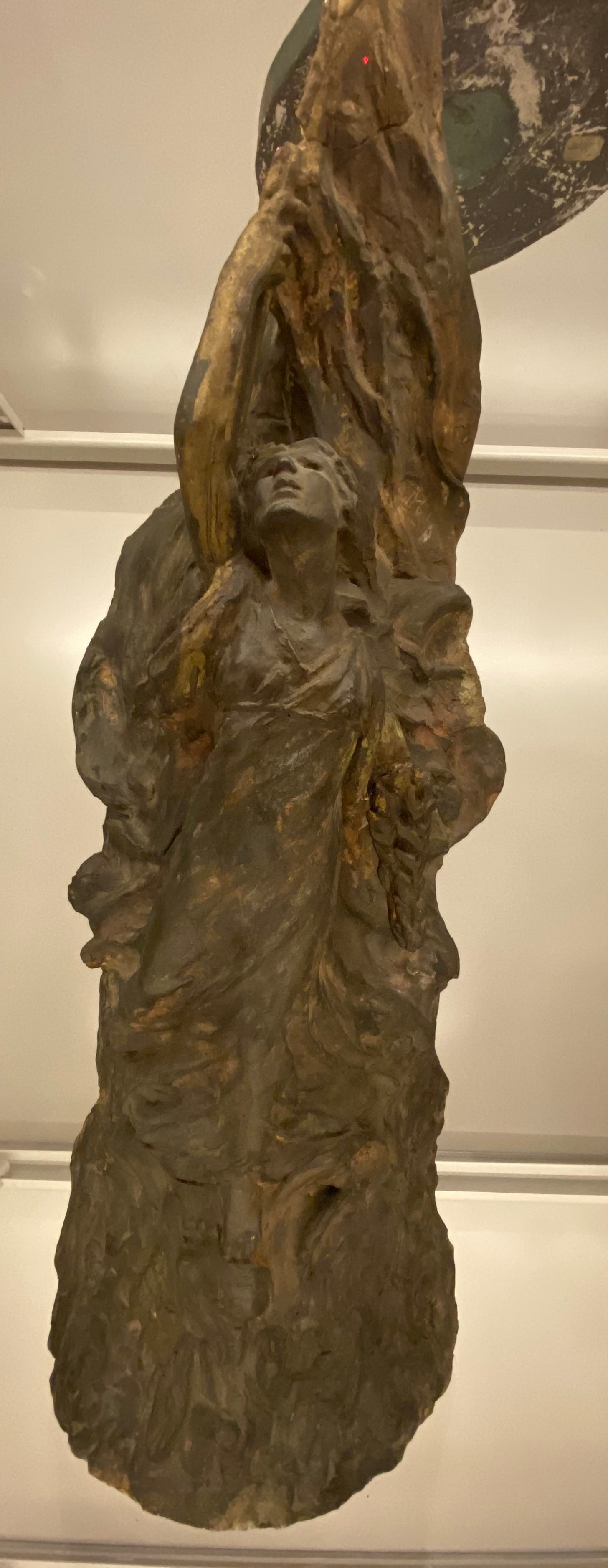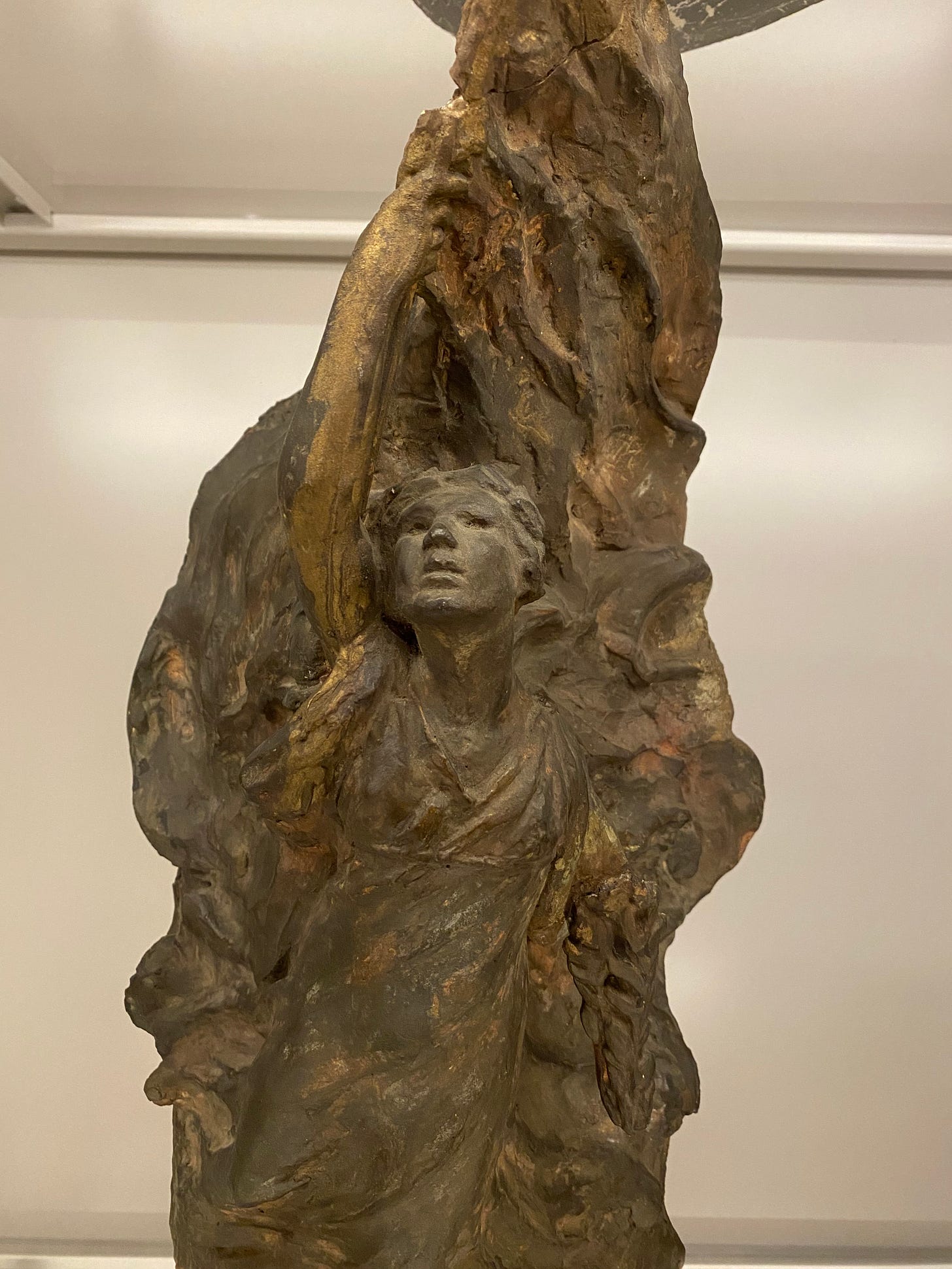The Massachusetts Medievalist on Sculptor Meta Vaux Warwick Fuller's Victory Figure
This past week, the Massachusetts Medievalist was delighted to visit the Danforth Museum in Framingham MA to see their permanent exhibition of sculptor Meta Fuller's life and work. Fuller (1877-1968) is usually considered the first important African-American female sculptor. While much of her work has been lost, much of what remains is serendipitously within easy driving distance of my house. At the Danforth, a recreation of her attic studio provides atmosphere for the open-storage presentation of the collection, which includes casts and studies as well as a few finished works. Among the largely uncatalogued treasures, I was most taken with this confident, striding woman:
The work is slightly more than a foot tall, and so is possibly a study for a larger project that never came to fruition (see the varying sizes of extant versions of Fuller's most famous work, Ethiopia Awakening, full size at the New York Public Library and in smaller scale at the Smithsonian's African-American History museum). The Danforth Museum's title, "Victory Figure," evokes the Nike of Samothrace, as does the curving motion of the female figure as she advances into the space before her, raising her flag and gesturing to implied followers and to the viewer as well.
Fuller was working here in a long tradition of allegorical female figures; possibly her most immediate reference is to Delacroix's Liberty Leading the People (1830), which Fuller would definitely have seen along with the Nike in the Louvre's collection when she studied in Paris (1899-1902). Like Delacroix's, Fuller's figure moves forward with a flag in her raised right hand. Unlike Delacroix's bare-breasted Liberty who looks towards her comrades, Fuller's looks up to the sky, or more likely to Heaven; she also is modestly and simply dressed (both figures are barefoot). Fuller changes the French for an abstracted American flag, alluding to the philosophical overlap between the two countries' Liberté and Liberty, as well as the unfinished business of full liberty and civil rights for Fuller and her African-American community.
The ambiguous presentation of the flag is part of the sculpture's appeal - the roughened, three-dimensional lines represent the stripes on the American flag, but they also look like flickers of fire, as if she is carrying a flame as well as a flag. Like Fuller's searing sculpture of lynching victim Mary Turner, this figure is rendered in plaster, painted to give it a faux-bronze finish, and small parts of the flag's stripes are even lightly painted to look a bit like sparks. The shape of the piece as a whole is curved like a flame, this powerful woman flaring from its base.
*Thanks to Danforth Collections Manager Rachel Passannante and Visitor Services Coordinator Mary Erickson for their assistance and patience with my queries as I start diving down the Meta Fuller rabbit hole!
To subscribe to the Massachusetts Medievalist, click here



